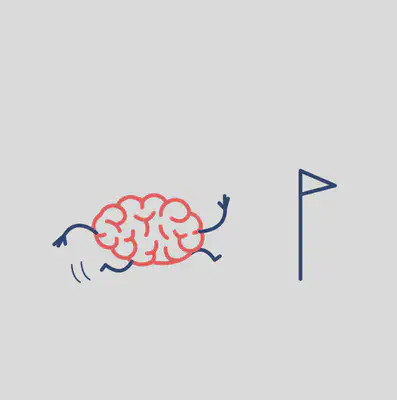Mental contrasting with implementation intentions (MCII) to encourage pro-environmental consumer behavior
What is the boost?
Mental contrasting with implementation intentions (MCII) is a four-step process:
-
Define your goal.
-
Identify possible outcomes of reaching your goal and imagine a positive future.
-
Contrast the positive future with current reality and identify obstacles that could prevent you from reaching your goal.
-
Form if–then plans that specify how you will act when an obstacle arises. For example, “If I need to go somewhere, I will always try to use public transport over taking my own car.”
These simple if–then plans specify when, where, and how a specific behavior will lead to the goal. They can help people develop climate-friendly consumer behavior such as avoiding overly packaged products, buying local and seasonal food, or eating less meat.

Which challenges does the boost tackle?
Although many people intend to make climate-friendly purchases, it’s difficult to change habits. People tend to choose what they are used to. Also, commercial environments can make it difficult for consumers to make climate-friendly choices, thereby further widening the gap between intentions and behavior. In supermarkets the unhealthy choices are often times displayed more prominently than the healthy choices. This makes it convinient for people to grab the unhealthy choice. MCII can help people translate good intentions into actual behavior.
How does it work?
MCII, which combines mental contrasting and implementation intentions, can be described as conscious planning. In mental contrasting, a person visualizes a goal and anticipates obstacles. Implementation intentions are simple if–then plans that specify a desired behavior when an obstacle materializes: “If situation or obstacle Y arises, then I will perform goal-directed behavior Z to achieve goal X”. For example, “I want to travel more sustainably. I will feel a better if I do it and it is also better for the environment. However I usually take my car if iI have to go somewhere therefore I plan to if I need to go somewhere, I will look up options to travel there by public transport”.
Which competences does the boost foster?
Mental contrasting combined with Implementation intentions help people replace old entrenched habits with new habits.
What is the evidence behind it?
Several studies have shown that mental contrasting, implementation intentions and MCII help people behave in a more environmentally friendly manner. In a field study, participants demonstrated stronger pro-environmental consumer behavior, purchasing more environmentally friendly products, after having set an implementation intention. In another study, participants in an MCII condition reduced their meat consumption in a span of five weeks. MCII participants did not have a significantly higher reduction of their meat consumption than the control participants at Follow-up 1(t(53) = 1.79, p = 0.079, d = 0.49) they did so at Follow-up 2 though (t(53) = 2.19, p = 0.033, d = 0.61).
Key reference
- Gollwitzer, P. M. (1999). Implementation intentions: Strong effects of simple plans. American Psychologist, 54(7), 493–503. https://doi.org/10.1037/0003-066X.54.7.493
- Grimmer, M., & Miles, M. P. (2017). With the best of intentions: A large sample test of the intention-behaviour gap in pro-environmental consumer behaviour. International Journal of Consumer Studies, 41(1), 2–10. https://doi.org/10.1111/ijcs.12290
- Loy, L. S., Wieber, F., Gollwitzer, P. M., & Oettingen, G. (2016). Supporting sustainable food consumption: Mental contrasting with implementation intentions (MCII) aligns intentions and behavior. Frontiers in Psychology, 7. https://doi.org/10.3389/fpsyg.2016.00607